These soft and chewy, cheerfully crinkly and perfectly purple ube amaretti are a delight to behold (and to eat!)
Easy to make and naturally gluten free, amaretti cookies are an almond-lover’s delight. This violet variation features ube extract (purple sweet potato) for a unique color and flavor.
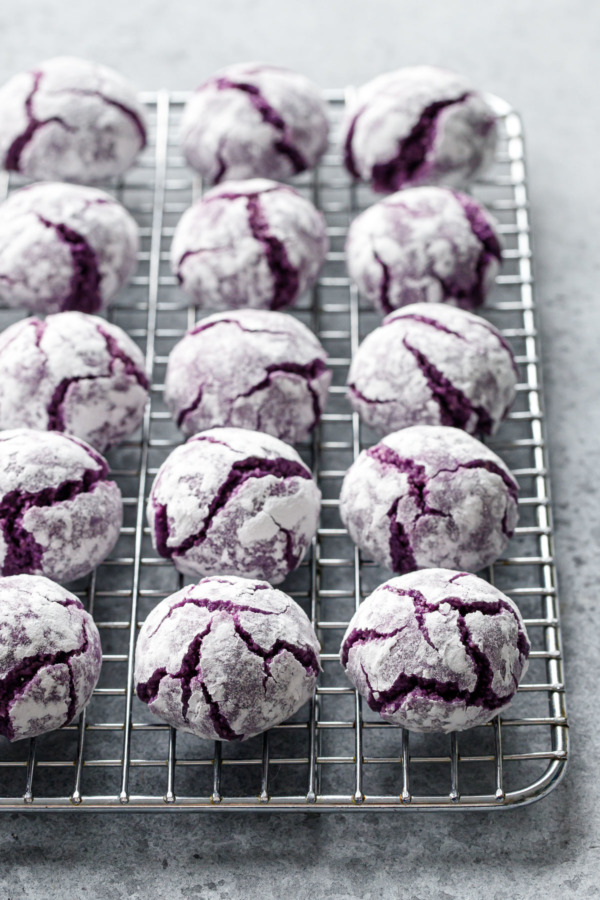
Amaretti or not, here I come…
…with yet another flavor variation of my favorite soft and chewy amaretti cookies: this time featuring ube!
I know, I know. I’ve already got 10 other amaretti cookie recipes, and ube makes 11.
But truly, how many is too many amaretti? Is there such a thing?
I’m probably wearing out my welcome with amaretti recipes at this point, but let’s be honest, I wouldn’t keep making them if you all didn’t love them so. Or if I didn’t love them equally. Or if they weren’t so darn easy and satisfying, not to mention impressive.
At this point I may as well finish out the rainbow, right? (Just need to figure out the orange and blue flavors, we’ll count the originals as yellow although I dare say a lemon amaretti would be rather lovely.)
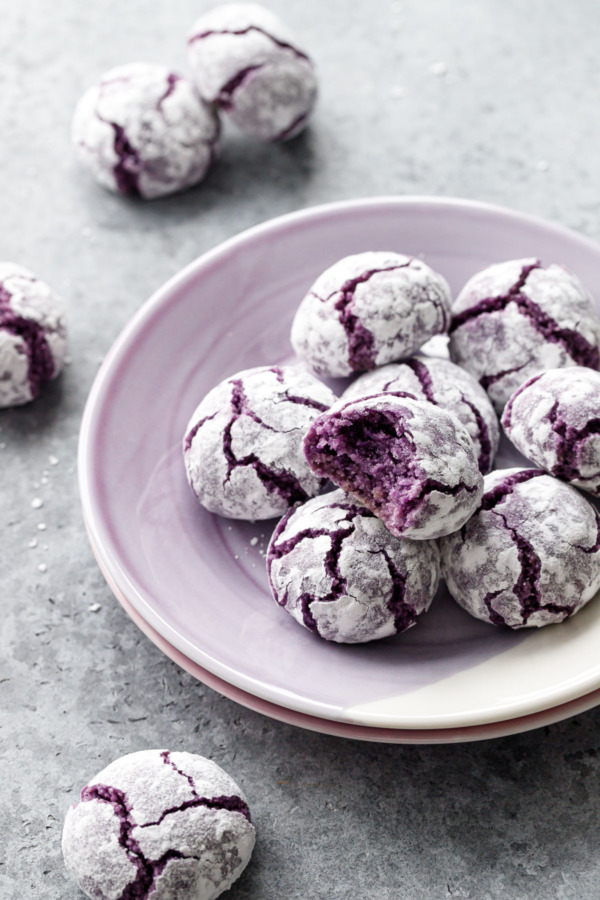
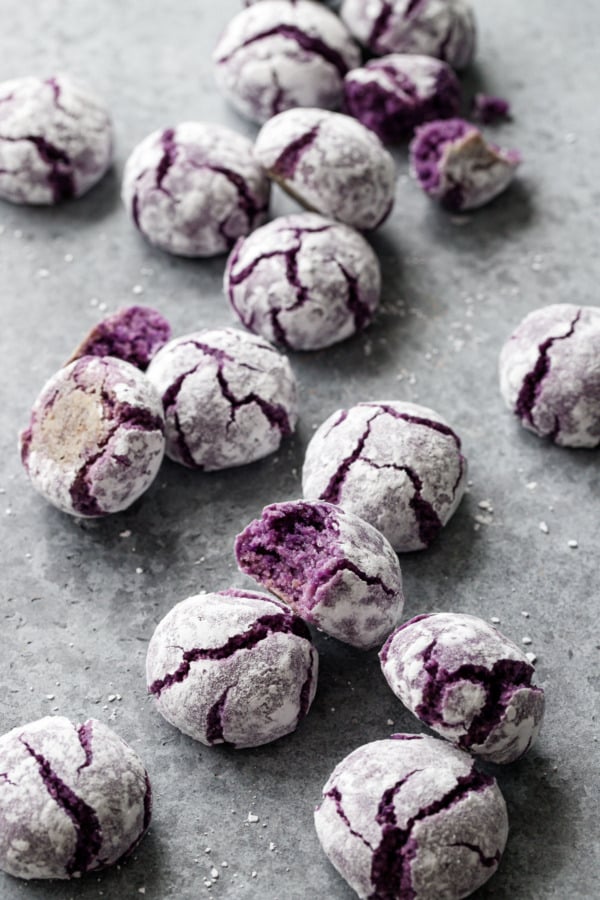
What is Ube?
Ube is a variety of purple yam originally from the Philippines. It is commonly used in desserts throughout Southeast Asia, often cooked down with sugar and condensed milk to make a creamy, sweet jam called ube halaya.
Despite the fact that ube is often labeled as purple sweet potato, it’s actually a yam. Don’t confuse it with other varieties of purple sweet potatoes (such as Japanese purple sweet potatoes or the Stokes variety from the US), which are much starchier, with a flavor that’s more similar to their orange counterparts. (Will Americans ever get their yams and sweet potatoes straight? Unlikely.)
Ube, if you’ve never tried it before, is a unique flavor in and of itself: mellow and slightly nutty with hints of coconut and vanilla. It’s a flavor that, in this case, pairs beautifully with almond. And unlike almond extract, which amplifies sweetness, I found ube extract to have the opposite effect: I almost wanted to add more sugar to these cookies. Even with identical proportions, I found them much less cloying than the original amaretti.
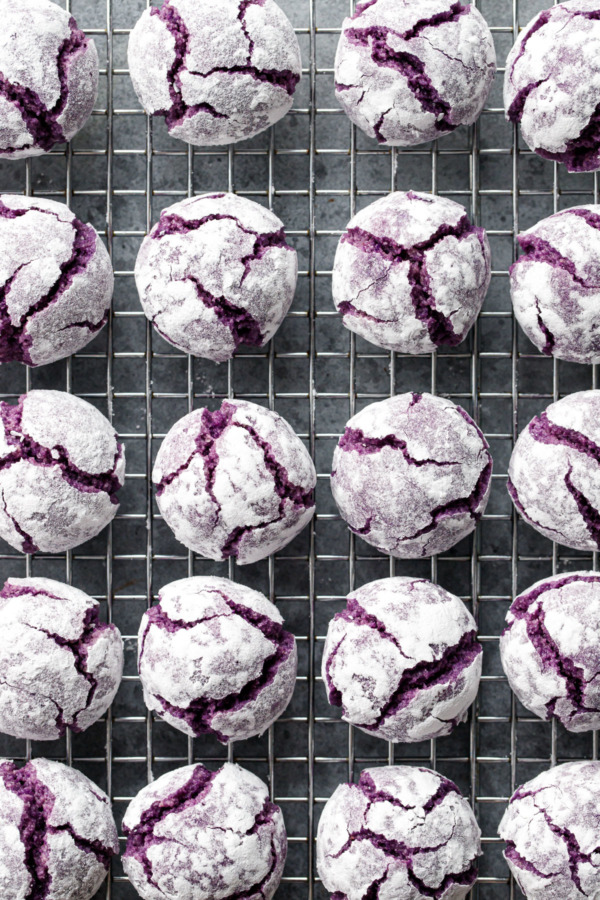
I tested these perfectly purple crinkle cookies multiple times, way more than I expected considering the final iteration is nearly identical to the original, just with a bit of ube extract mixed in. (I should know better by now, you don’t mess with a good thing!)
Fresh ube is not easy to come by here in the US (in our neck of the woods at least). If you’re lucky you can maybe find it frozen. Otherwise the most common forms of ube are extract, powder, or jam (ube halaya).
While I didn’t this recipe using jam (the excess moisture content would make for a very different recipe), I did test it with both ube extract and ube powder in various forms.
For my first batch, I used a coarse ube powder that, I realized later, was intended to be cooked and rehydrated to make ube jam. Unfortunately, while they tasted good, the texture was… rather gritty. And since one of the defining features of these cookies is the chewy, marzipan-like texture, anything that negatively affected that texture is a definite no-go in my book.
So I ordered a few different kinds of ube powder, looking for brands that seemed to be finer and more dissolvable (if the powder said it could be used to make ube-flavored drinks, I figured it’d be more appropriate for these cookies). Unfortunately, even though these powders weren’t at all gritty, they still imparted a somewhat starchy texture to the cookies that I just didn’t love.
Six half batches of cookies later… we unanimously decided that the extract-only version was the winner. (At the very least I made a solid dent in my freezer stash of egg whites left over from all my summer ice cream experiments, so that was a plus at least.)
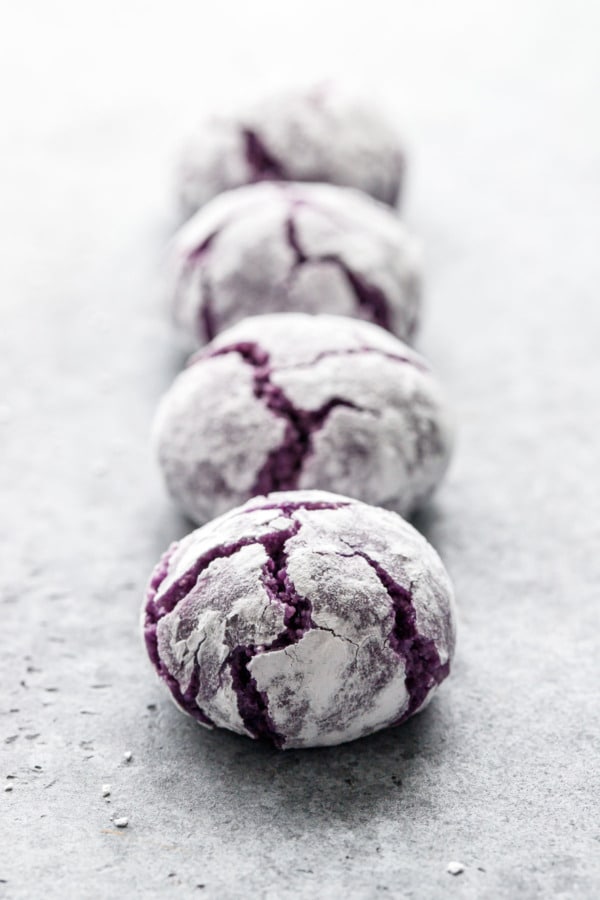
I still did one more test run to prove my hypothesis that a bit of baking powder helped the cookies crack more (spoiler: it does!) I know I get occasional comments on my other amaretti recipes that the cookies didn’t crack as much as mine did, and that’s usually a result of overall moisture (usually a drier brand of almond flour or over-measured almond flour).
Baking Tip: For any of my amaretti recipes: adding 1/4 teaspoon of baking powder will produce wider and more defined cracks.
Adding more than 1/4 teaspoon will cause the cookie to spread quite a bit more, and while I loved the chewiness of this batch, the texture was almost too light, so much so that I missed the marzipaniness of it.
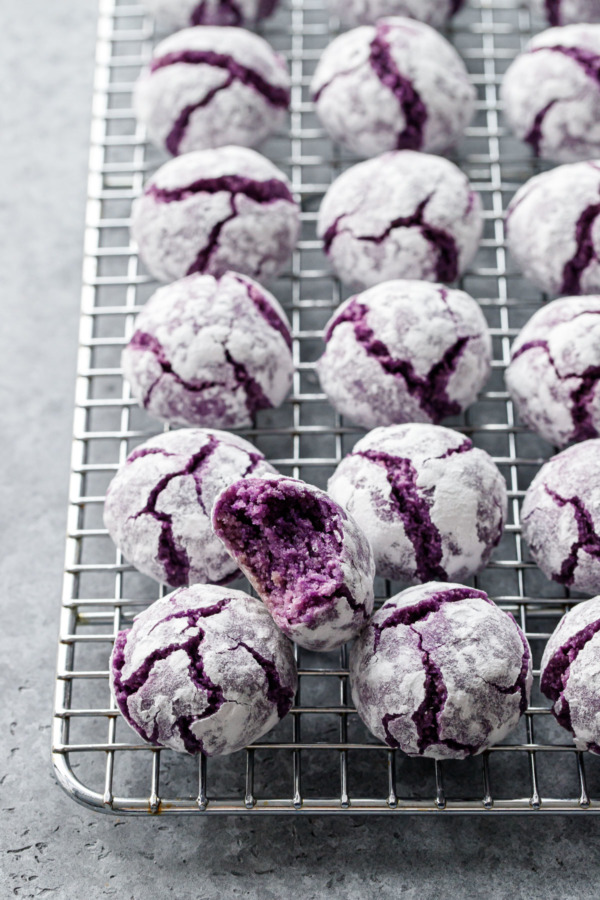
Extract, Extract! Read all about it!
Ube extract can easily be found online, or if you have a market that carries Filipino or Southeast Asian ingredients you’ll probably be able to find it there. McCormick is the brand I used, Butterfly is another common one that’s slightly thicker but otherwise pretty similar.
The extract is both flavoring and color, so, unlike all my other amaretti recipes, I can’t claim this one is naturally colored. I have yet to find an ube extract without artificial coloring, it seems to be par for the course (but if you know of one please let me know). That said, a little bit goes a long way, just 1 1/2 teaspoons is more than enough to flavor and color an entire batch.
Just… please keep it away from your light-colored countertops. Or clothing. Or anything else that you don’t want stained vibrantly purple. Just trust me on this one, ok?
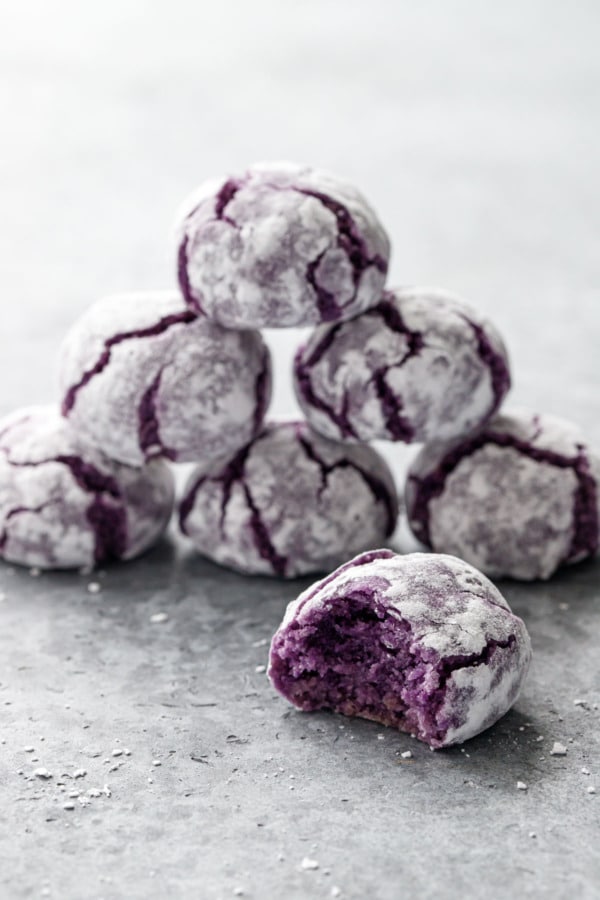
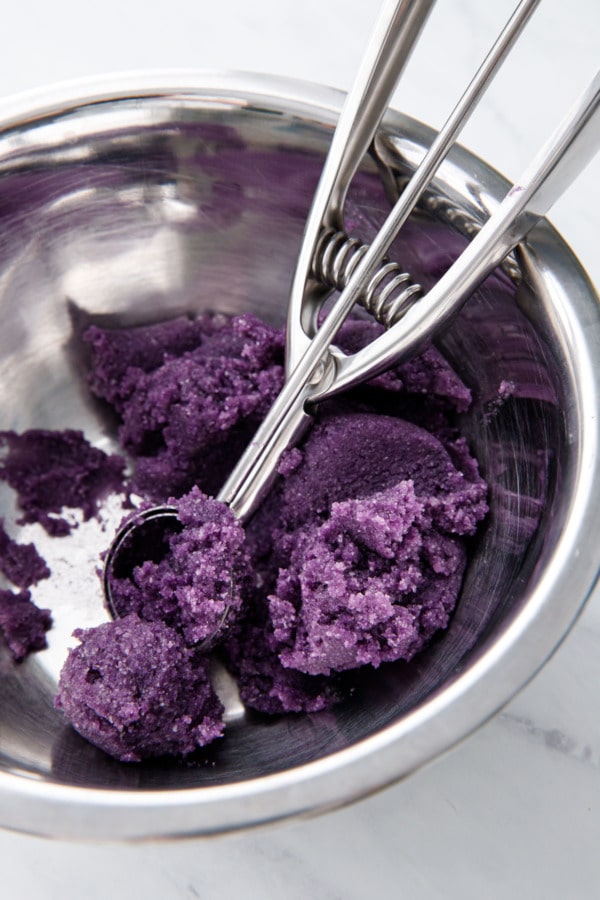
Double Up
As with all my other amaretti recipes, I recommend baking these cookies on two stacked cookie sheets. The additional cookie sheet provides some extra insulation on the bottoms, preventing them from getting too brown before the rest of the cookie can cook through. I also recommend heavy-weight, light-colored cookie sheets for the same reason.
If you don’t have two identical cookie sheets, you can drop the oven temperature by 15 or 20 degrees, which should give you a few extra minutes of baking time before the bottoms start to brown (this low and slow bake is what gives the cookies their chewy exteriors and soft, marizpan-like middles).
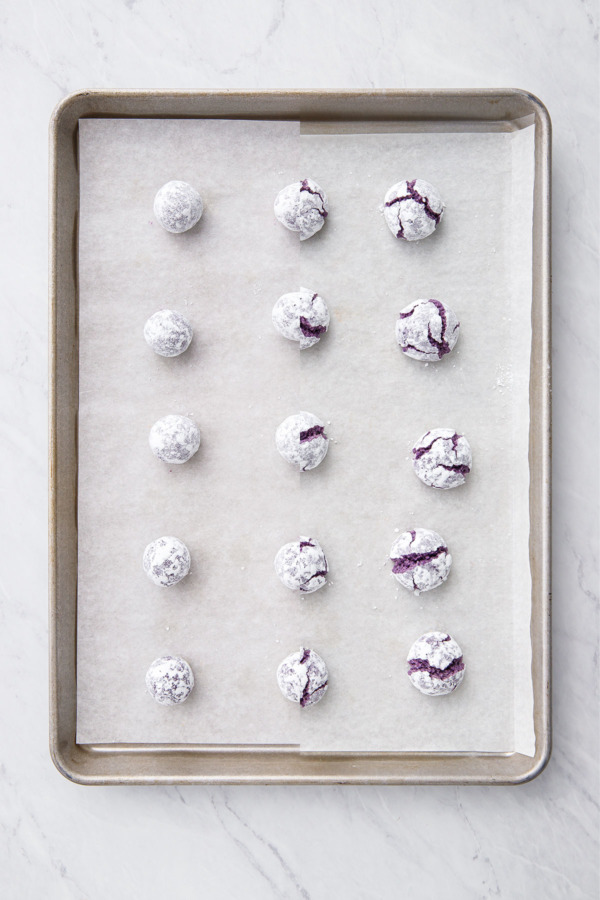
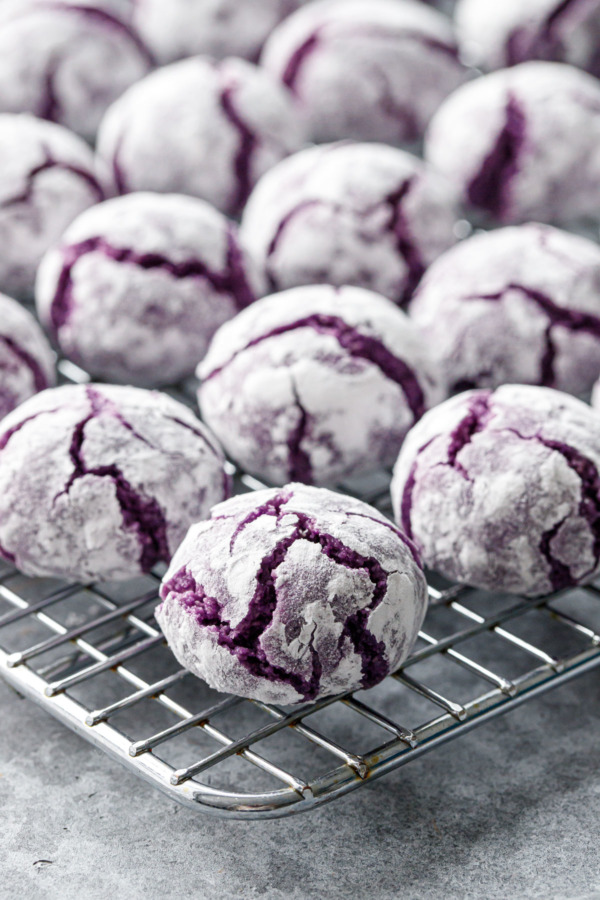
Freezing & Storage
Amaretti cookie dough can be frozen prior to baking, and they can be baked straight from frozen (you can re-coat them with a bit more powdered sugar if necessary). Give frozen cookies an additional 3 to 5 minutes to bake.
While amaretti cookies will dry out if left out in the open air, they keep quite well in an airtight container, or even vacuum sealed if shipping across the country (my sister out in SF gives her approval… what, do you think the two of us actually ate 6 dozen amaretti? Of course not. We’re pros at sharing at this point.)
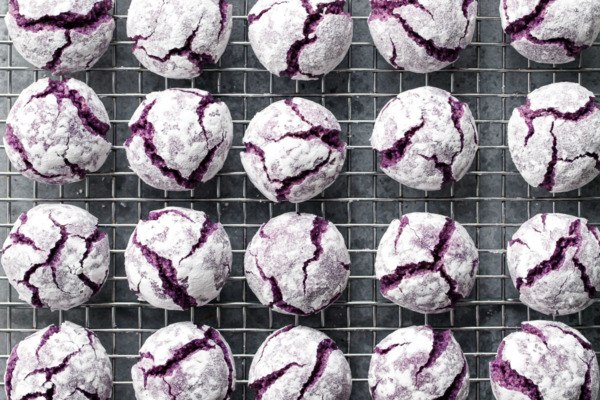
Ube Amaretti Crinkle Cookies
Easy to make and naturally gluten free, amaretti cookies are an almond-lover’s delight. This violet variation features ube extract (purple sweet potato) for a unique color and flavor.
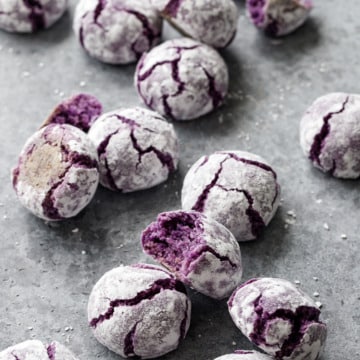
Ingredients:
- 2¼ cups (200g) almond flour or very finely ground almonds, sifted
- 7/8 cup (180g) granulated sugar
- ¼ teaspoon baking powder
- pinch fine sea salt
- 2 large egg whites (about 65 grams)
- ¼ teaspoon lemon juice
- 1½ teaspoons ube extract
- confectioners’ sugar, as needed
Directions:
- Preheat oven to 300 degrees F. Stack two matching, heavyweight, light to medium colored cookie sheets one inside the other (stacking two cookie sheets together keeps the bottoms of the cookies from getting too brown). Line with parchment paper or a silicone baking mat.
- In a large bowl, whisk together almond flour, sugar, baking powder, and salt until evenly incorporated.
- In a mixing bowl or the bowl of a stand mixer fitted with the whisk attachment, whisk egg whites and lemon juice until they hold soft peaks.
- Add beaten egg whites and ube extract to dry ingredients and stir until mixture forms a soft, sticky dough, kneading with your hands if necessary.
- Lightly dust your hands with powdered sugar. Use a small cookie scoop to portion dough into 1-inch balls. Roll into a smooth ball, then roll in powdered sugar. Arrange on parchment or silicon-lined baking sheets, leaving 1 inch of space between cookies.
- Bake for about 26 to 30 minutes until tops are cracked and bottoms are just barely starting to brown (if you are not using doubled cookie sheets the bottoms will brown much quicker, so watch them closely). Remove from oven; let cool a few minutes, then transfer to wire racks to cool completely.
- Cookies will keep at room temperature in an airtight container for up to 5 days.
Did you make this recipe?
Let us know what you think!
Leave a Comment below or share a photo and tag me on Instagram with the hashtag #loveandoliveoil.
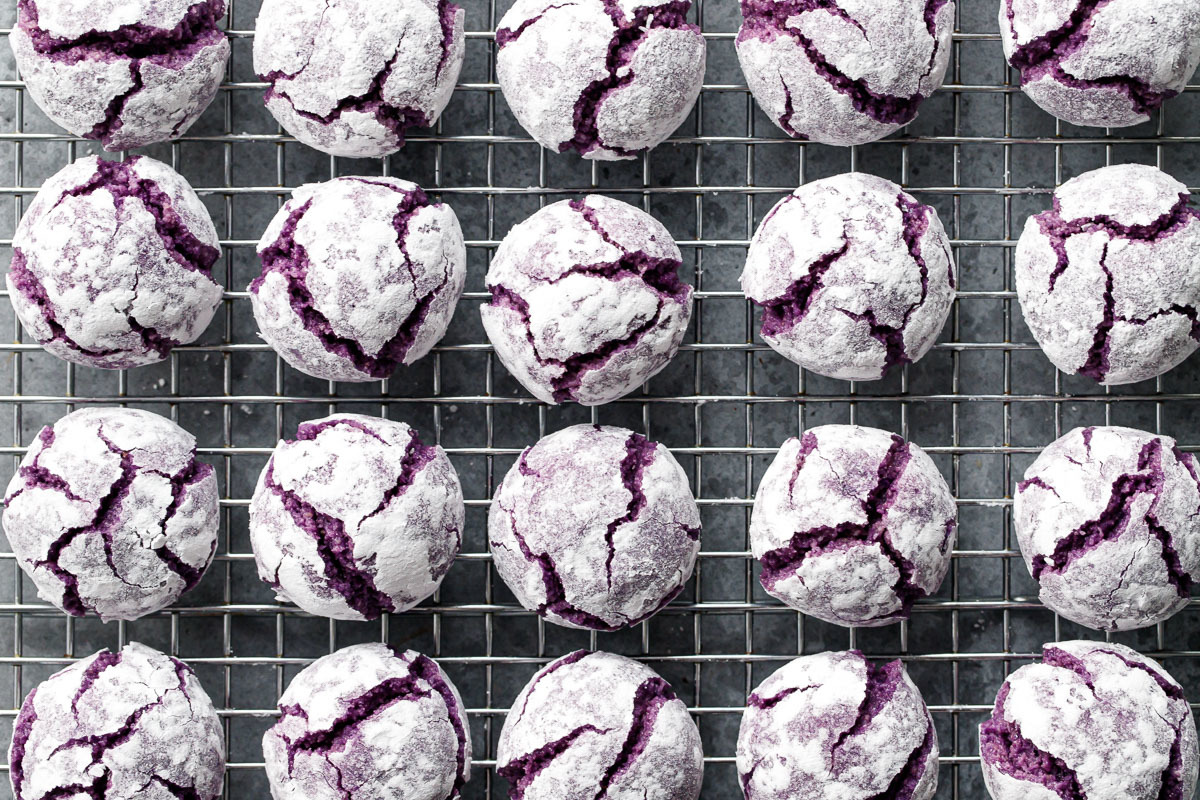
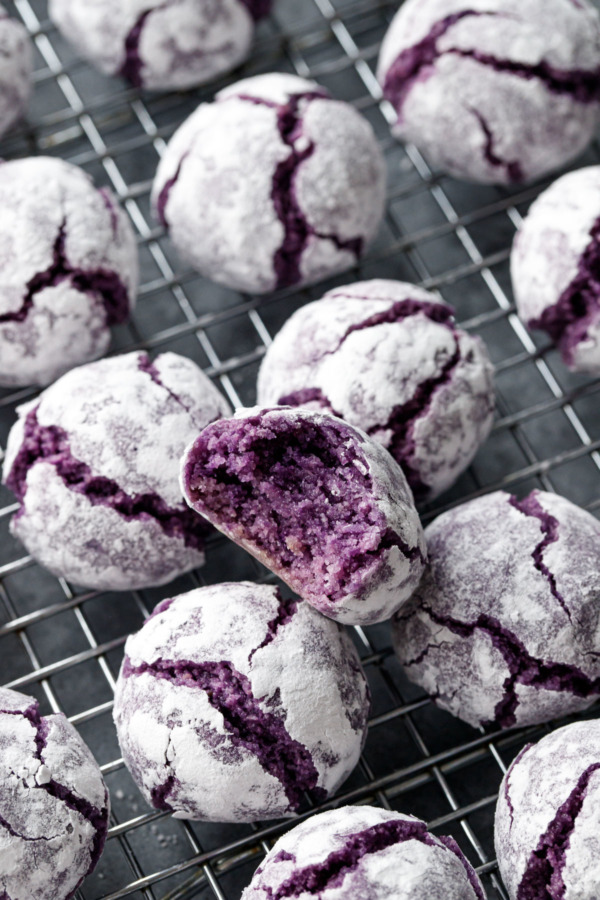
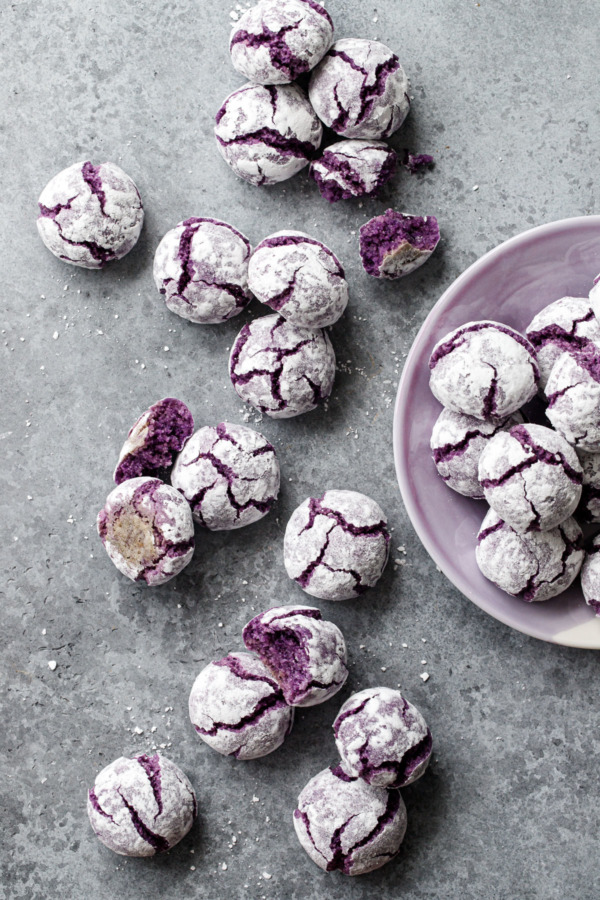
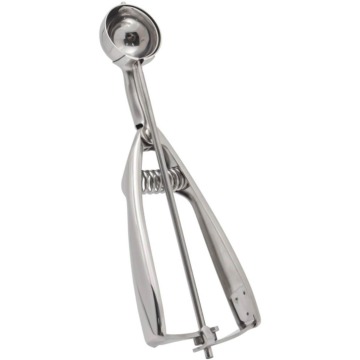
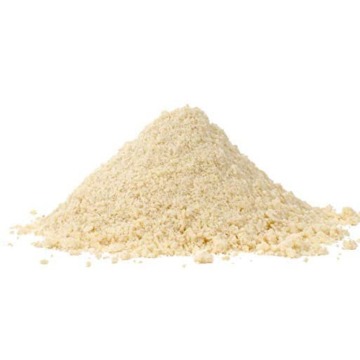
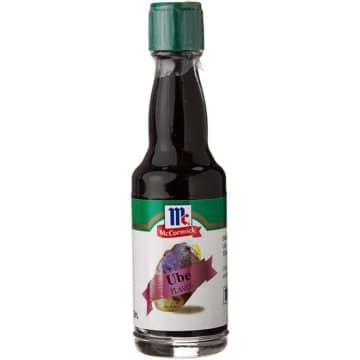
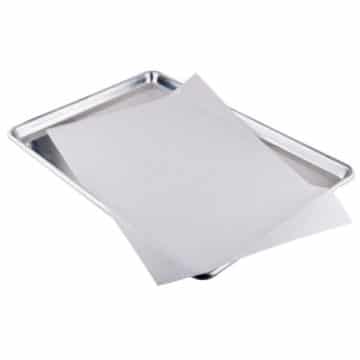
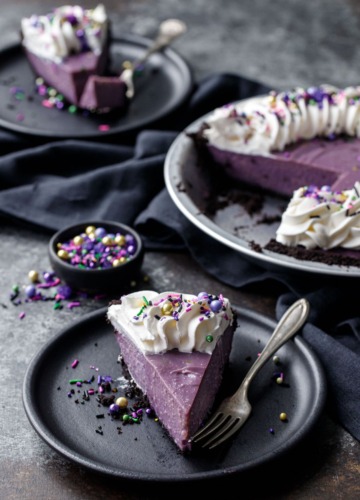
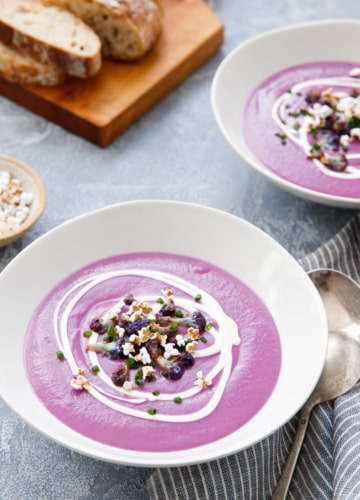
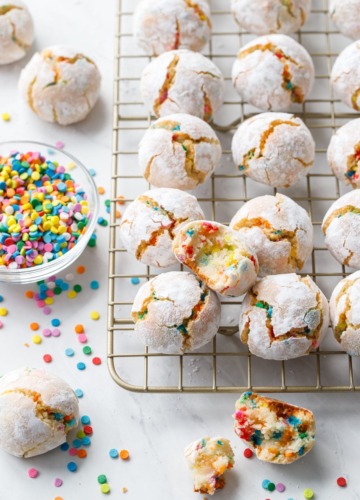
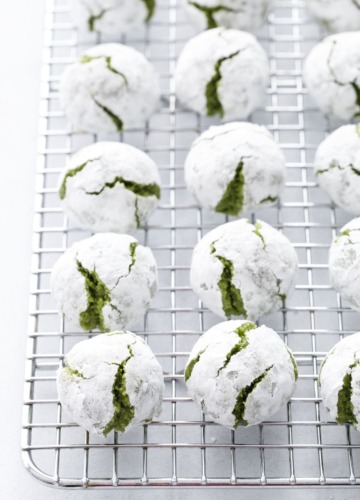
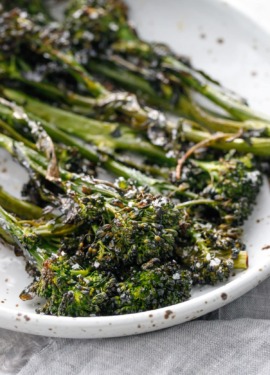
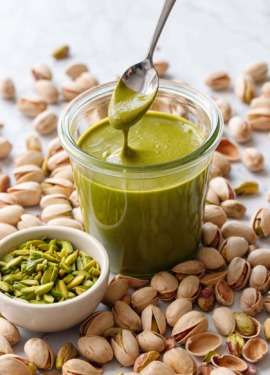
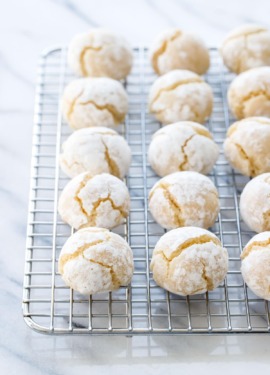
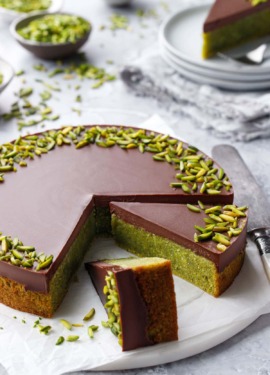
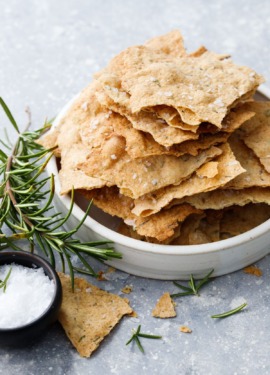
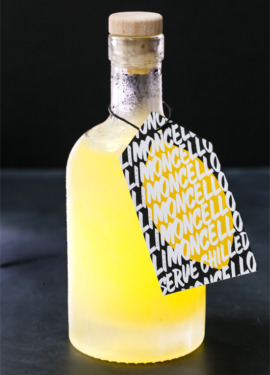
I made this yesterday and it was very good! Crunchy on the outside, chewy on the inside. I used a measuring tablespoon instead of a cookie scoop and it made 18 cookies. Mine came out almost exactly like yours. I rolled too much powdered sugar on it haha but I was able to shake/wipe it off carefully after cooling it down. Sadly, I didn’t taste any of the ube flavor at all, just almond flavor. I used the ube extract from Butterfly. Maybe I’ll add a tiny bit more extract next time? Still very good though! Everyone loved it!
These are so pretty and I would love to make them today. I have Ube powder, can I use it instead if extract and if yes how much h do I add?
Thank you 💜
I tested these with ube powder and didn’t like the resulting texture (too starchy), which is why I used extract in the final recipe.
I am so excited to make these. 💜 Oh how beautiful in color there are. :-) I am in Thailand at the moment and have a jar full of Purple Sweet potato (ube) powder… Can i use it and if yes how much of it? I have uses it in making sourdough before.. just dusting on top and it gave it a beautiful medium shade purple color.
thank you 💜
These look so gorgeous 💜 but the artificial flavors, coloring, and propylene glycol kind of turn me off 🤔 I was wondering your thoughts on using Butterfly Pea Flower Powder to make a beautiful blue colored amaretti ?!?
Hi. Where can I find the nutritional values for this recipe? Or how many calories is one cookie?
These cookies are so good! I didn’t expect the outcome! So happy to come across this recipe.
Thank you for sharing!
Can you use carton pasteurized egg whites?
This is my first time baking homemade cookies. When I saw these ube amaretti cookies, I knew I just had to try to make them because they looked so delicious. I thought I was going to have a difficult time baking them since they looked so perfect on the photo, but the recipe was easy to follow. They came out looking exactly like yours and they tasted sooooo delicious. My kids and relatives loved them. My daughters made my day when they told me the cookies I baked had so much flavor and tasted way better than what they tasted at a birthday party. I used the ube extract that I bought from the asian market. The extract didn’t have that vibrant purple color so I added a little bit of purple food coloring. Thank you so much for this recipe! You’re awesome and I appreciate you! I will be trying your other amaretti crinkle cookies recipes.
I am so happy you loved this recipe, and hooray for homemade baking! I hope this is the first of many delicious batches of cookies to come. :)
These look stunning…but I have a lemon allergy. Anyway that can be substituted? Thank you in advance!
A pinch of cream of tartar will work instead!
I must admit, Ube was ubiquitous in our household growing up. So the thought of having this flavor in a cookie form, I’m sold! After doing a test run, I’m prepping another batch for my cookie exchange this weekend. The texture was delightful. The flavor was almondy with a hint of Ube (more extract next time, perhaps). I ended up with 30 cookies with gorgeous cracks. Fifteen seconds in the microwave helps soften the cookie days after baking.
These look beautiful! Wondering how many cookies the recipe will yield if prepared as directed. Thank you in advance!
I always get exactly 26 cookies every time I make this (portioned using a small cookie scoop).
These look beautiful! Wondering how many cookies each batch will yield if prepared as directed. Thank you in advance!
How many batches of this recipe do you think can be made at a time? Can I scale the whole thing up four times, do you think?
These cookies look amazing and delish! Would powdered ube also work in this recipe?
This looks so stunning! I can’t wait to try this myself now, I’m absolutely sure it’s going to be a hit with the family!!
I’ve used your recipe to make lemon amaretti cookies and they were delicious, my friends love them! Can’t wait to try the ube version as I love all things ube.
Made this yesterday and it was a huge hit. I could not believe how fast it went. I will make it again. Thank you for sharing such amazing recipes.
Havin a nut allergy in the family is there alternative to almond flour?
I’ve successfully used other nut flours (like pistachio and hazelnut), but if you can’t eat any nuts, this really isn’t a good cookie recipe for you. Sorry!
“…I have yet to find an ube extract without artificial coloring, it seems to be par for the course (but if you know of one please let me know)…”
Hello, Taylor and Lindsay!
I too am in search for non-artificial flavourings and I ‘pass’ if it includes ube extract. Your Ube Amaretti Crinkle Cookies recipe, however, is simply hard to ignore.
Well, I found this just today:
https://amoretti.com/products/natural-purple-sweet-potato-artisan-flavor?variant=6347785306144
Looks like its ingredients doesn’t include anything artificial (Purple Carrot Juice concentrate, Natural Flavor, Potato). But, oh, so expensive since the smallest bottle is $16+ for 8oz. The comments/reviews gave it a thumbs up though, so it may be worth buying, esp., if you are going to make tons of ube stuff ;-) The holidays are upon us once more, and I would like to make your recipe. That said, I may fork out some dinero and purchase the smallest bottle to give it a try.
Thanks for sharing, guys.
Worth a try, though I can’t say how much you might need to get a good flavor (more than a few teaspoons would adversely affect the texture of the cookies). It also probably won’t be nearly as vibrant (also natural colors like this tend to change in the oven, especially for recipes with baking powder/soda).
I did test this recipe using ube powder which does not contain any added color, basically replaced about 2 tablespoons of the almond flour for ube powder. It produces a firmer and more starchy texture, which is why I opted against it for this final version, but it did give the cookies some nice color and flavor. That may be a better option for you to try.
These crinkle cookies look so delicious. I will definitely try this on weekend. Keep on sharing more delicious recipes with us.